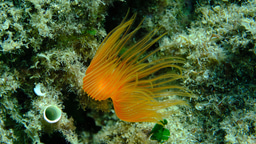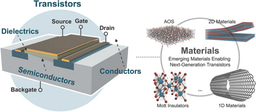Several years ago, based on informal input from various members of the community, Nature Methods established some internal minimum reporting standards for manuscripts describing new or improved fluorescent proteins. These were never formally reported but were often communicated to authors of submitted manuscripts when the characterization data provided didn’t meet these standards.
Recently we were fortunate enough to be able to meet with a substantial number of fluorescent protein developers to informally endorse and revise these standards. Our revised reporting requirements for fluorescent proteins are listed below.
Minimum reporting requirements for fluorescent proteins
- Full absorption and excitation (250nm to 750nm) and emission curves (350nm to 950nm) under single-photon excitation and at least some data under 2-photon excitation
- Values for quantum yield, extinction coefficient, brightness and pKa
- Gel filtration data to show that the protein is monomeric or acknowledgement that it isn’t monomeric
- Data on fluorophore maturation time including the final maturation percentage. Detailed protocol must be provided
- Image data on several representative protein fusions to show that it does not disrupt protein function. This should include tubulin since it is pretty universally used for this purpose
- In vitro photostability data compared to other representative proteins. At a minimum this should be decay curves under widefield and confocal illumination to test two different irradiation intensity regimes. Ideally, graphs of the decay time constant versus power should be provided
- Cytotoxicity measured in mammalian cells by flow cytometry and compared to EGFP and at least one established fluorescent protein in the spectral range of the reported protein
We also used this opportunity to set some standards for photoswitchable fluorescent proteins. These proteins display quite complicated behaviors and the desired characteristics can vary depending on the application. An example of this is the different characteristics desired for (f)PALM/STORM vs RESOLFT or SSIM super-resolution imaging. These new reporting standards are listed below and supplement the ones above which would also apply to photoswitchable fluorescent proteins.
Additional minimum reporting requirements for photoswitchable FPs
- Graphs of 20 cycles at different powers to observe decay with full details on power and methods
- Absorption spectra before and after photoconversion
- Optimal parameters for the best power and also for another power
- Measurement of how complete the switching is
We encourage developers and users of fluorescent proteins to comment on these minimal reporting standards. But more than that… we’d like your help in moving forward from here.
Are additional standards needed due to new developments?
Do we need standards similar to these in other areas?
We have found that enforcing common standards on highly related tools can greatly improve the efficiency and objectivity of the peer review process and help avoid holding similar developments to different standards. Of course, this requires flexibility in enforcement and we will always allow editor’s some discretion in enforcing these requirements when there is a legitimate reason for doing so.


![Highlights of the BMC Series - [October] [2025]](https://images.zapnito.com/cdn-cgi/image/metadata=copyright,format=auto,quality=95,width=256,height=256,fit=scale-down/https://images.zapnito.com/users/840921/posters/759a1fb0-b10f-491e-bdff-940b3c1a87de_medium.png)


Please sign in or register for FREE
If you are a registered user on Research Communities by Springer Nature, please sign in